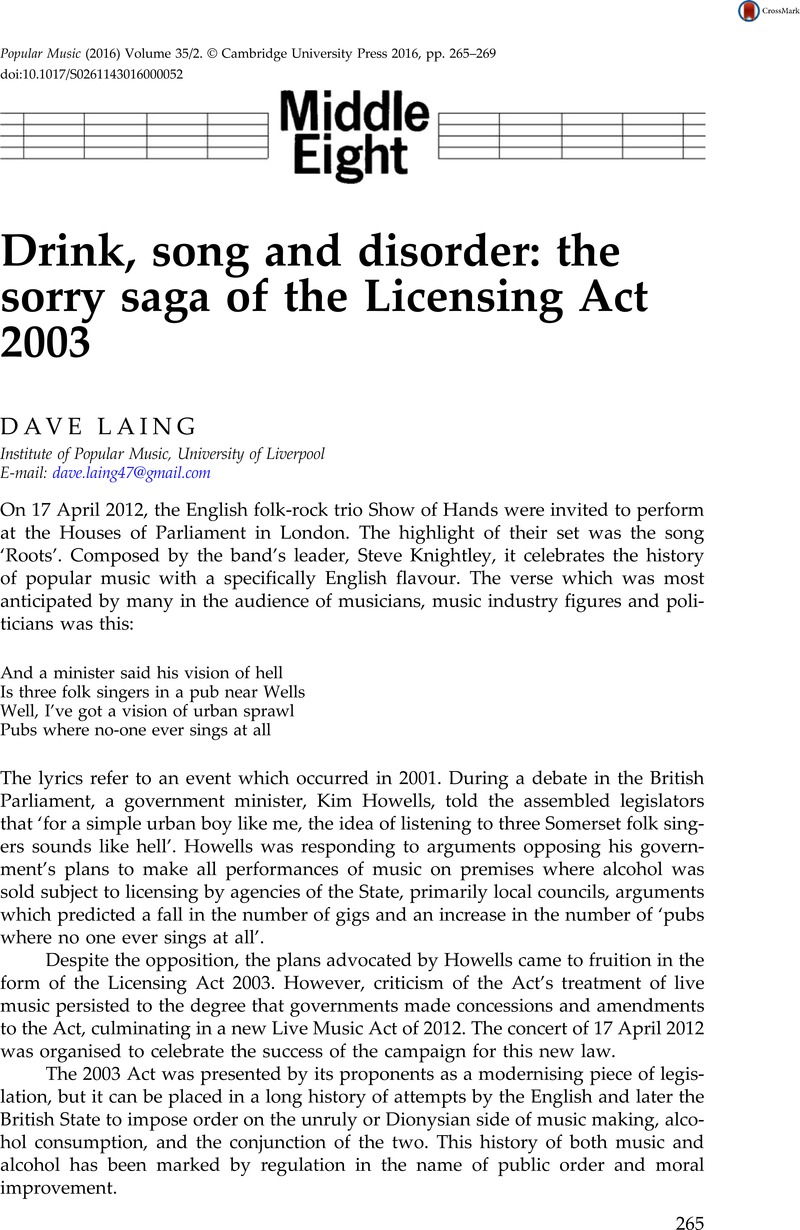Crossref Citations
This article has been cited by the following publications. This list is generated based on data provided by Crossref.
Homan, Shane
2019.
‘Lockout’ laws or ‘rock out’ laws? Governing Sydney’s night-time economy and implications for the ‘music city’.
International Journal of Cultural Policy,
Vol. 25,
Issue. 4,
p.
500.





